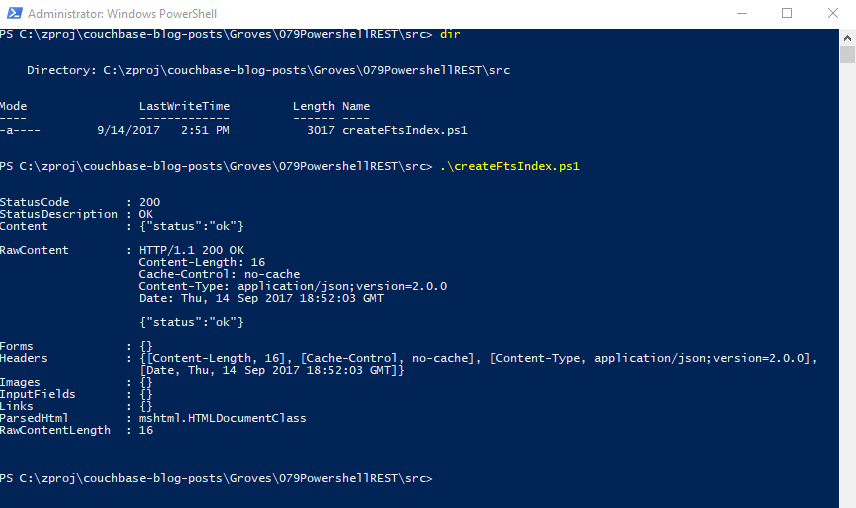curl -XPUT -H "Content-Type: application/json" http://localhost:8094/api/index/medical-condition -d '{ ... json payload ...}'Posts tagged with 'rest'
Steve Crow is using Nexmo to communicate. This episode is not sponsored! Want to be a sponsor? You can contact me or check out my sponsorship gig on Fiverr
Show Notes:
-
curl is a command line tool to make HTTP requests
-
OpenAPI initiative
-
A highlight video of Twitch Plays Pokémon (you might want to jump to about 2:30 to get to the good stuff)
-
A video on the Monty Hall Paradox featuring Alan Davies!
Want to be on the next episode? You can! All you need is the willingness to talk about something technical.
Tim Wingfield is using lots of APIs. This episode is sponsored by Smartsheet.
Show Notes:
- FireEye
- Ruby on Rails
- REST: REpresentational State Transfer
- CRUD: Create, Read, Update, Delete
- HTTP Request Methods: PUT, POST, GET, PATCH, DELETE
Want to be on the next episode? You can! All you need is the willingness to talk about something technical.
Music is by Joe Ferg, check out more music on JoeFerg.com!
This is a repost that originally appeared on the Couchbase Blog: Powershell with the Couchbase REST API.
PowerShell is a scripting environment / command line that comes with Windows and is also available for Linux and within Azure.
Maybe you’ve used Postman or Fiddler to make HTTP requests. Those are great, but not necessarily the right tools for automation or scripting.
You may have heard of curl before. It’s a command line tool for making HTTP requests.
If you’re a .NET/Windows developer (like me), maybe you aren’t familiar with curl. I use PowerShell as my default command line every day (though I still consider myself a PowerShell neophyte). In this post, I’ll show you how you can use PowerShell’s Invoke-WebRequest to make HTTP requests (which you can use within PowerShell scripts for automation).
You can check out the PowerShell script I created on GitHub. Note: as of the time of writing this post, I’m using PowerShell 5.1 on Windows 10.
Couchbase REST API
Couchbase Server has a an extensive REST API that you can use to manage and administrate just about every aspect of Couchbase Server. For this blog post, I’m going to focus on the Full Text Search (FTS) API. I’m going to show this because:
-
Creating an FTS index is something you’ll eventually want to automate
-
You will probably want to share an FTS index you created with your team and/or check it into source control
-
Couchbase Console already shows you exactly how to do it with curl.
I’m not going to cover FTS in detail: I invite you to check out past blog posts on FTS, and this short video demonstrating full text search.
Full Text Search review
When you initially create an FTS index, you will probably use the built-in FTS UI in the Couchbase Console. This is fine when you are doing the initial development, but it’s not practical if you want to share this index with your team, automate deployment, or take advantage of source control.
Fortunately, you can use the "Show index definition JSON" feature to see the JSON data that makes up the index definition. You can also have Couchbase Console generate the curl method for you.

Well, if you’re using curl, that’s very convenient. Here’s an example:
You can copy/paste that into a script, and check the script into source control. But what if you don’t use curl?
PowerShell version: Invoke-WebRequest
First, create a new PowerShell script. I called mine createFtsIndex.ps1. All this PowerShell script is going to do is create an FTS index on an existing bucket.
You can start by pasting the "curl" command into this file. The bulk of this command is the JSON definition, which will be exactly the same.
Let’s breakdown the rest of the curl command to see what’s happening:
-
-XPUT- This is telling curl to use the PUT verb with the HTTP request -
-H "Content-Type: application/json"- Use a Content-Type header. -
http://localhost:8094/api/index/medical-condition- This is the URL of the REST endpoint. The "localhost" will vary based on where Couchbase is running, and the "medical-condition" part is just the name of the FTS index. -
-d '…json payload…'- The body of content that will be included in the HTTP request.
PowerShell’s Invoke-WebRequest can do all this stuff too, but the syntax is a bit different. Let’s step through the equivalents:
-
-Method PUT- This is telling Invoke-WebRequest to use the PUT verb with the HTTP request, so you can replace-XPUT -
-Header @{ … }- Specify headers to use with the request (more on this later) -
-Uri http://localhost:8094/api/index/medical-condition"- You just need to add "-Uri" in front -
-Body '…json payload…'- The body of content is included this way instead of using curl’s-d
Headers
PowerShell expects a "dictionary" that contains headers. The syntax for a literal dictionary in PowerShell is:
@{"key1"="value1"; "key2"="value2"}
So then, to specify Content-Type:
-Headers @{"Content-Type"="application/json"}
One thing that the curl output did not generate is the authentication information that you need to make a request to the API. With curl, you can specify basic authentication by adding the username/password to the URL. It will then translate it into the appropriate Basic Auth headers.
With PowerShell, it appears you have to do that yourself. My local Couchbase Server has credentials "Administrator" and "password" (please don’t use those in production). Those need to be encoded into Base64 and added to the headers.
Then the full Headers dictionary looks like this:
-Headers @{"Authorization" = "Basic "+[System.Convert]::ToBase64String([System.Text.Encoding]::UTF8.GetBytes("Administrator:password")); "Content-Type"="application/json"}
You might think that’s a bit noisy, and I agree. If you know a cleaner way to do this, I’m dying to know. Please leave a comment.
Execute the PowerShell script
To execute the script, simply type .\createFtsIndex.ps1 at the PowerShell command line.

You’re now ready to make this a part of your deployment.
Summary
PowerShell is a handy tool for scripting and automation. It’s used by Azure, Octopus Deploy, and anywhere Windows is running. Use PowerShell to automate Couchbase REST API calls for things like Full Text Search indexes, and your team will thank you.
Need help? Reach out to me with questions by leaving a comment below or finding me on Twitter @mgroves.
Kevin Griffin is using Twilio to control the phones.
Show notes:
- Twilio
- Twilio Blueprint (available for pre-order)
- DevConnections 2016 in Las Vegas
- KevGriffin.com (blog)
- HR (Hampton Roads) DevFest in Virginia
Want to be on the next episode? You can! All you need is the willingness to talk about something technical.
Theme music is "Crosscutting Concerns" by The Dirty Truckers, check out their music on Amazon or iTunes.
I've recently had to write some ASP Classic. Don't worry, it's not like I'm writing new features, just integrating with old ones. So, since this is an ancient technology, some of this may be old news to you. But much of it was new to me, and I'm a developer with some years of ASP Classic experience.
Most of the stuff I had to do was pretty minor, but one major thing I found interesting was that I had a need to make an HTTP request in ASP classic. This turns out to be not so bad.
The trickiest part was figuring out that I had to explicitly specify the content type, since it apparently doesn't set a default.
So, yay! But also, uh oh. Now I have a response, but it's in Json. How the heck do I deal with that in ASP Classic? I was already worried about having to create an XML endpoint or finding some hacky JSON parser written in VBScript. But I took a deep breath and Googled it first. I was pleasantly shocked with what Stack Overflow told me about parsing Json in ASP. Did you know that ASP Classic is typically associated with VBScript, but actually can support other languages, like JScript and PerlScript? JScript is Microsoft's implementation of ECMAScript (commonly referred to as JavaScript), which they made available server-side via ASP long before you had a crush on Node.js. (Yeah I'm trolling a bit, but give me a break: as I write this, I've been layed up with the flu watching a House, M.D. marathon on Netflix, so I'm feeling a bit snarky).
ANYWAY
If we can run JScript and VBScript with the same ASP Classic page, then guess what, we can use Douglas Crockford's JSON library. It's so perfect and simple, and I wish I came up with it on my own.
That's about 100 times more elegant of a solution than I even expected when I started on this code.



